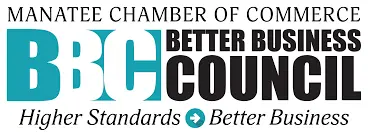In the vast ocean of website analytics, one metric often stands out as both simple and perplexing: bounce rate. It’s a figure that can have a significant impact on your website’s performance in search engine results pages (SERPs) and ultimately, its success in attracting and retaining visitors. But what exactly is bounce rate, and how can you optimize it to improve your SEO efforts? Let’s dive in and explore.

What is Bounce Rate?
Bounce rate refers to the percentage of visitors who navigate away from a website after viewing only one page. In other words, they “bounce” away without interacting further with the site. This could mean closing the tab, hitting the back button, or typing a new URL into the address bar.
Importance of Bounce Rate in SEO
Google and other search engines consider bounce rate as one of the factors when determining a website’s relevance and quality. A high bounce rate may indicate to search engines that the content or user experience on a particular page is not satisfactory, potentially leading to lower rankings in search results.
Factors Influencing Bounce Rate
Several factors can contribute to a high bounce rate, including:
- Relevance of Content: If the content doesn’t match what visitors expect when they land on your page, they’re more likely to bounce.
- Page Load Speed: Slow-loading pages frustrate users and often lead them to abandon the site.
- User Experience: Cluttered layouts, intrusive pop-ups, and difficult navigation can drive visitors away.
- Mobile Optimization: With the majority of internet traffic coming from mobile devices, a lack of mobile optimization can lead to higher bounce rates.

Strategies to Reduce Bounce Rate
Now that we understand what bounce rate is and why it’s important, let’s explore some strategies to reduce it and improve your website’s SEO performance:
- Create Compelling Content: Make sure your content is valuable, engaging, and relevant to your target audience.
- Optimize Page Load Speed: Minimize image sizes, leverage browser caching, and use a content delivery network (CDN) to ensure fast loading times.
- Improve User Experience: Simplify navigation, eliminate intrusive elements, and ensure your website is easy to use on all devices.
- Optimize Metadata: Craft enticing meta titles and descriptions that accurately reflect the content of your pages and encourage clicks from search engine results.
- Internal Linking: Guide visitors to other relevant pages on your site to encourage further exploration and reduce bounce rates.
- A/B Testing: Experiment with different layouts, content formats, and calls to action to see what resonates best with your audience.
FAQ
Q: Is a high bounce rate always bad? A: Not necessarily. In some cases, a high bounce rate may be indicative of users finding exactly what they need on a single page, such as a contact page or a blog post that answers their question comprehensively.
Q: What is considered a good bounce rate? A: Bounce rates can vary widely depending on factors such as industry, website type, and traffic source. However, as a general guideline, a bounce rate between 26% to 40% is considered average, while anything below 25% is excellent.
Q: How often should I monitor my website’s bounce rate? A: It’s a good idea to monitor your bounce rate regularly, ideally on a weekly or monthly basis. This allows you to identify trends over time and take corrective action as needed.

External Reference
For further insights into optimizing bounce rate and improving user engagement, check out this comprehensive guide from Search Engine Journal.
Conclusion
Bounce rate is a crucial metric that can significantly impact your website’s SEO performance. By understanding its significance and implementing strategies to reduce it, you can enhance user engagement, improve search engine rankings, and ultimately drive more valuable traffic to your site. Remember, optimizing bounce rate is an ongoing process that requires continuous monitoring and refinement, but the rewards are well worth the effort.




